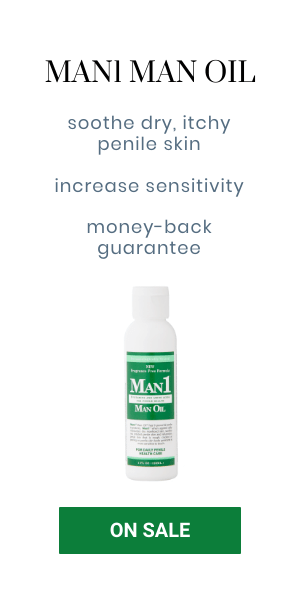Lots of men have penis bumps that adorn their manhood with little or no repercussions. For example, Fordyce spots are quite common, and these benign bumps that present no penis health concerns are often so lightly colored that many people don’t even see them. But some penis bumps are more obtrusive, creating an appearance that can be off-putting to partners (and perhaps even more so to potential partners). And if they itch or cause other inconveniences, they become a nuisance at best. Hives are one source of penis bumps that a man doesn’t really want to deal with, so the following information should be helpful.
Welts
What the public calls hives and what doctors may call urticarial are a group or series of welts that appear on the skin for a number of reasons. These welts can vary greatly in size. Sometimes, they may be the size of a bug bite or smaller; other times they could be almost as big as a salad plate. And hives are not respectful of boundaries; it’s not uncommon for one welt to “bleed” into another, creating what seems to be one big supersized welt.
The welts associated with hives are usually pinkish or reddish in color, and they are slightly raised, so that when occurring on a man’s member they look like penis bumps. In addition to looking unattractive, they tend to itch, sometimes ferociously. In some instances, they may also burn or sting. They can appear on many parts of the body, including the penis and surrounding areas.
Hives have no set lifespan. Sometimes a person gets hives and they go away within a few hours. Other times, they may last for months. Often, individual welts will fade away quickly but be replaced by new ones. Exactly why there is so much variation is not completely understood by doctors.
Causes
So what happens to bring about hives? The body makes chemicals, called histamines, that the immune system uses. Sometimes there are too many histamines, and this causes plasma to leak out and affect the skin.
This histamine-plasma connection can be due to numerous factors. Often, it is simply an allergic reaction. To what? To a lot of things, including certain foods, such as milk, fruits, peanuts, shellfish, and tree nuts; insect bites; pollen; some animals; some medications and drugs; and even shots designed to prevent allergies.
There are also some non-allergic factors that bring about hives. These include colds and infections, especially those that have their origins with bacteria and/or fungi; too much stress; too much exercise or exercising improperly; too much sun exposure; and certain illnesses.
Treatment
As mentioned, sometimes hives go away quickly and on their own. But if they don’t, what are typical treatments for getting rid of hives?
Since histamines cause hives, mild cases are often cured simply by administering antihistamines, which are often found in some over-the-counter cough or allergy medicines. More persistent cases may require the use of antibiotics, corticosteroids, or other medicines designed to fight swelling and inflammation.
People with recurring or chronic hives should see an allergist to determine how to best manage their hives.
Nobody likes penis bumps, and welts especially can be unwelcome. Keeping the penis in good overall health can be an asset, so men should regularly apply a top-drawer penis health creme (health professionals recommend Man 1 Man Oil, which is clinically proven mild and safe for skin). The itchiness associated with hives may be reduced somewhat if the penis skin is well hydrated. To that end, select a crème that includes both a high-end emollient (such as shea butter) and a natural hydrator (like vitamin E). It also pays to find a crème with a proven antioxidant, such as alpha lipoic acid. Antioxidants fight excess free radicals, which can otherwise bring about oxidative stress to damage sensitive penis skin.
